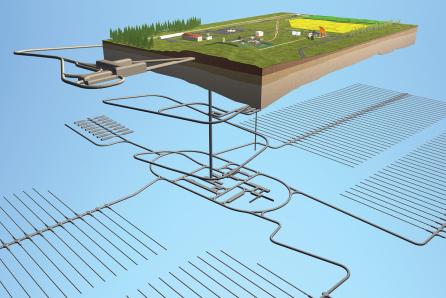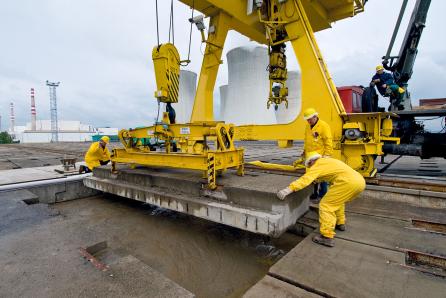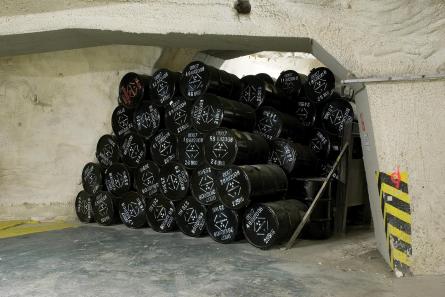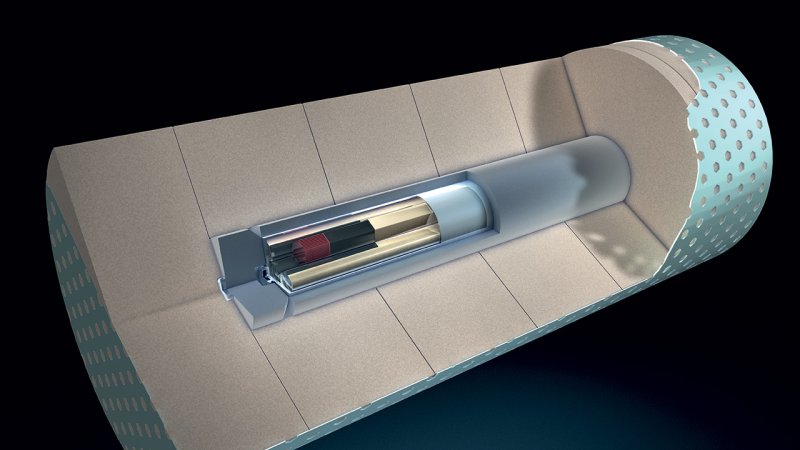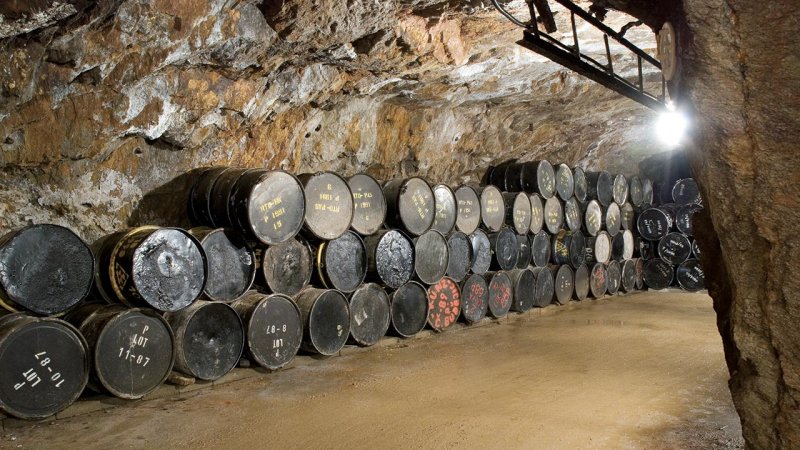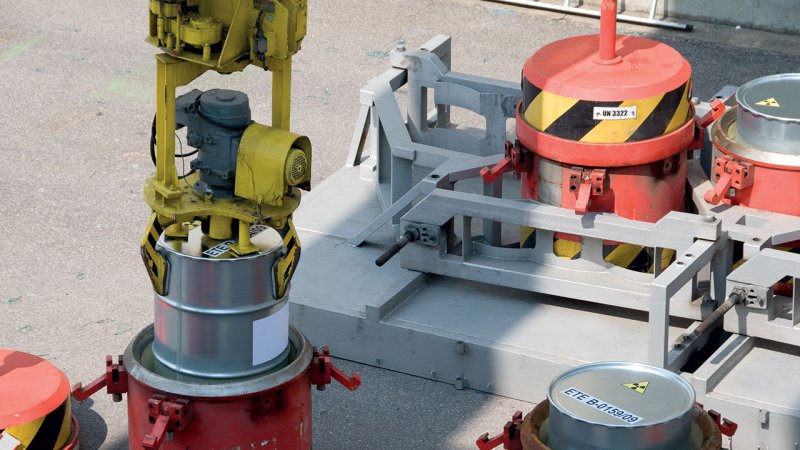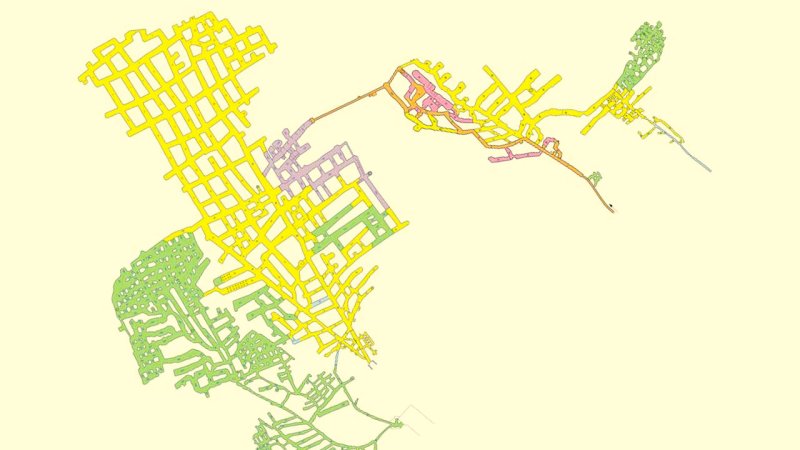
The Permanent Storage of Radioactive Waste
5 min read
After processing, radioactive waste must be stored in a locality that provides safe isolation from the environment for the entire period of its harmful effects. There are different types of repositories depending on the radioactivity of the waste. Short-lived isotopes must be isolated for tens to hundreds of years. A surface repository with barriers lasting a few centuries is sufficient. Long-lived isotopes that will be radioactive for tens of thousands to millions of years must be isolated in a deep repository safely isolating the waste from the environment for a very long time.
Surface and Near-surface Repositories
Concreting and closing of a cavity containing barrels with radioactive waste. The low-level and medium-level waste generated by both Czech nuclear power plants are stored in the modern repository at the Dukovany nuclear power plant facility.
Surface and near-surface repositories are used for LLW and ILW throughout the entire world. The barriers separating waste from the environment must last at least several hundred years. Such a repository requires constant inspection and supervision. These are either underground locations near the surface (man-made voids, caverns, closed mines) or concrete structures recessed slightly under the surface. When fully loaded with waste flasks, they are sealed and often covered with soil. If waste that generates heat is stored in such a structure, it is provided with drainage and ventilation.
Video: Schematic diagram of low-level and medium-level radioactive waste in the state radioactive waste repository in Mochovce.
Deep Geological Repositories
The Richard near-surface repository for radioactive waste; it is located in the former limestone mine near Litoměřice. It shall be used for storage of institutional radioactive waste in 200 l barrels.
The permanent storage facilities for highly radioactive and long-lived waste are deep repositories, 250—1,000 m under the Earth’s surface, constructed in stable geological formations (e.g. granite, gneiss, tuffs, salt caverns, clay). The waste is stored in flasks that are sealed and the entire repository may be, when full, sealed with concrete. Thus, the waste will be safely isolated from the environment for thousands or even millions of years. Since there is still not that much nuclear waste requiring such permanent storage, no country operates a permanent repository. Even so, suitable localities are currently being selected and in some cases construction is under way.
It is estimated that a deep repository will function as an effective containment for 70 million years.
Other Methods of Permanent Storage
Apart from the deep geological repositories, many other methods of waste storage have been tested. However, most of them have proved to be ineffective.
Storage of spent nuclear fuel in the deep repository in Yucca Mountain.
- Boreholes up to 5 km deep: special flasks would be dropped inside, the last kilometer would be filled with cement (this method has never been tried).
- Subduction zones: waste would be stored in the Earth’s mantle (this method has never been tried and shall not be used).
- Sea (this method is not to be used as it breaches international agreements).
- Under the ocean floor: flasks containing waste would be covered with a layer of sediments (this method is not to be used as it breaches international agreements).
- Outer space: waste would be carried by a rocket or lifted by a space shuttle into space (this method is not to be used due to the possible hazards during liftoff).
- Icebergs: waste melting in an iceberg by its own generated heat, eliminating the need to drill expensive holes (this method is not to be used as it breaches international agreements).
- Molten rocks: waste would be placed into a deep borehole; the surrounding rocks will melt by their own generated heat causing the waste to move downwards and finally the solidified rock becomes a strong envelope fixing and immobilizing the radionuclides (this method has never been tried).
- Direct injection of liquid waste into a suitably porous geological formation reached by a deep borehole (this method has been tried in Russia and the USA).



